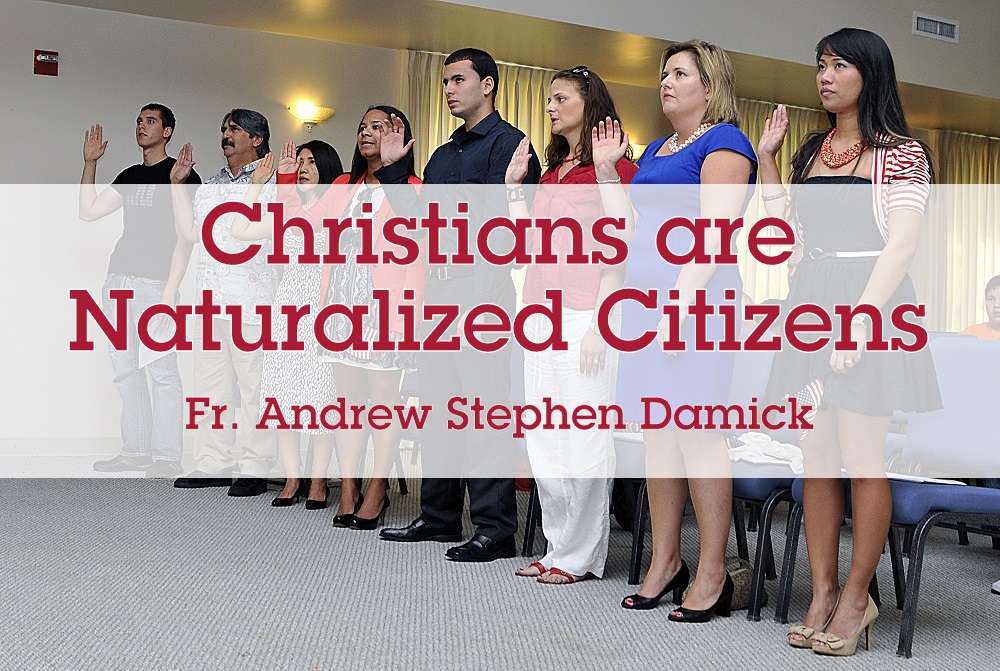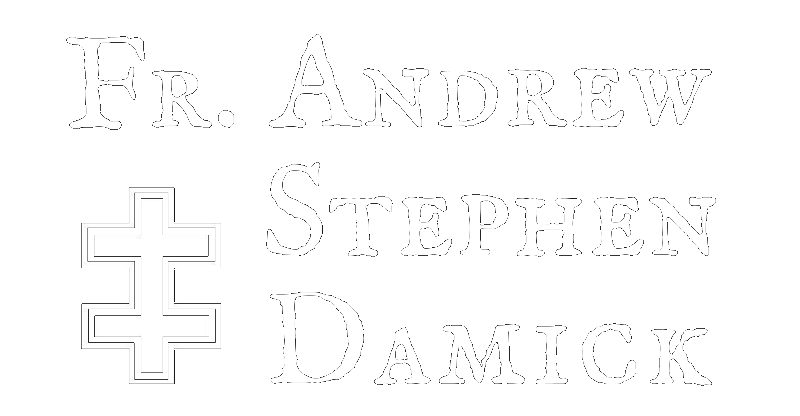
The following is the naturalization oath that makes someone a citizen of the United States when immigrating from another country:
I hereby declare, on oath, that I absolutely and entirely renounce and abjure all allegiance and fidelity to any foreign prince, potentate, state, or sovereignty, of whom or which I have heretofore been a subject or citizen; that I will support and defend the Constitution and laws of the United States of America against all enemies, foreign and domestic; that I will bear true faith and allegiance to the same; that I will bear arms on behalf of the United States when required by the law; that I will perform noncombatant service in the Armed Forces of the United States when required by the law; that I will perform work of national importance under civilian direction when required by the law; and that I take this obligation freely, without any mental reservation or purpose of evasion; so help me God.
Christians, who are immigrants from the world to the Kingdom of God, should have at least this level of awareness that we are entering into an allegiance to a new nation called by the name of Christ.
This recalls to mind an updated arrangement of the baptismal service which is soon going to be put into use in the Antiochian Archdiocese of North America. The translation has been fixed in a number of places, as well as the order of the service according to better manuscripts than were used in previous editions, utilizing long in-progress scholarship happening mainly in Greece. The section that interests me here is from the beginning of the service:
Priest: Dost thou align thyself with Christ?
(Together, each) baptizand, or if an infant, (together each) sponsor: I align myself.
The above question and answer are repeated THREE times.
The Symbol of Faith
The baptizand(-s as a group) then say(s) the Symbol of the Faith with their sponsors (or the sponsor for the infant): I believe in one God…Priest: Hast thou aligned thyself with Christ?
(Together, each) baptizand, or if an infant, (together each) sponsor: I have aligned myself.
The above question and answer are repeated THREE times.
Priest: Bow down and worship him.
Previous iterations of this dialogue use Dost/Hast thou united thyself to Christ and I do/have (join is also used in some translations). I am not a liturgical translator, but I am told that align is more correct here.
There is nothing theologically wrong with unite or join, but what is happening here is announcing a new allegiance, which makes sense, because this follows immediately from the question Hast thou renounced Satan? with the answer I have renounced him! And all these things are said no fewer than three times—let there be no mistake!
As Christians, we should understand ourselves as naturalized citizens of the Kingdom of God. We have renounced Satan, renounced the world (that is, the fallenness of the world), renounced our citizenship in that fallen kingdom. We are now aligned with Christ. We are now giving Him our allegiance. And as part of giving that allegiance, in reciting the Symbol of Faith (the Creed), we are showing that we believe in what His Kingdom believes. We are showing that we will fulfill our part of the covenant.
There is no room here for choosing only certain parts of the covenant or certain beliefs, nor for a dual citizenship between the Kingdom of God and the kingdom of the evil one. We have renounced Satan and everything he stands for, and we have aligned ourselves with Christ. Let us now bow down and worship Him!




Father, I just don’t know about that word “align” and hope someone weighs in with the original meaning. I happen to know some English, however, and “align” strikes me as weak as compared with “unite” or “join.” In construction or carpentry, aligning two things certainly brings them together, probably physically touching, perhaps pointing them the same way. But joining them involves a lot more. And in uniting, two become one.
Just checked the common cup my wife and I used in our wedding ceremony. It’s engraved “United in Christ,” not “Aligned with Christ.”
Now, I happen to be aligned with a jurisdiction that also has problematic translations…..
Well, this is from the baptismal service, not the wedding. And weddings are not really a matter of pledging a new allegiance.
That said, even if join or unite has “more” meaning, that does not make it the right one. If the point is that one is renouncing Satan and pledging allegiance to Christ, then align makes the most sense to me. One is not, after all “unjoining” or “disuniting” from Satan — we are not ever “joined” to him. We do, however, have an allegiance problem. The two words used here are apotaxis (renunciation) and syntaxis (alignment). Taxis isn’t about being “joined” but rather being “numbered [with]” or “ordered [with].” Hence, in English, taxonomy. (Union would be henosis.)
That you bring up the wedding, though, makes for a nice contrast here. In baptism, we are not “becoming one flesh” with Jesus Christ in the same way that spouses do. Certainly there is a marriage between Christ and the Church, but that is not what is happening at baptism. And certainly at this point in the service, it is about a realignment of the person with the Church and away from Satan, from heresy, etc. This needs to happen before the baptism itself occurs.
So, while I am not a translator, I am convinced that align is actually a far more accurate English term for what is happening at this point in the baptismal service.
Align just doesn’t sound right. To me (looking at the Greek text), it’s a distinction without much of a difference. But I do see the point. Align has the implication that you are in lock-step with Christ and His Church (think of aligning your printer so that it prints exactly where things are supposed to go) whereas the words “join” or “unite” do not convey that particular sense. I’ll have to do some more research, but I really don’t see it as really necessary. It’s not as if the current versions says something along the lines of “you want in?”
Syntaxis is used, among other things, for lining up all the troops together. The sense of giving one’s allegiance to Christ is what makes most sense here. A syntaxis is also a contract drawn up between persons. More “mystical” readings about union, etc., are inappropriate for this point in the service.